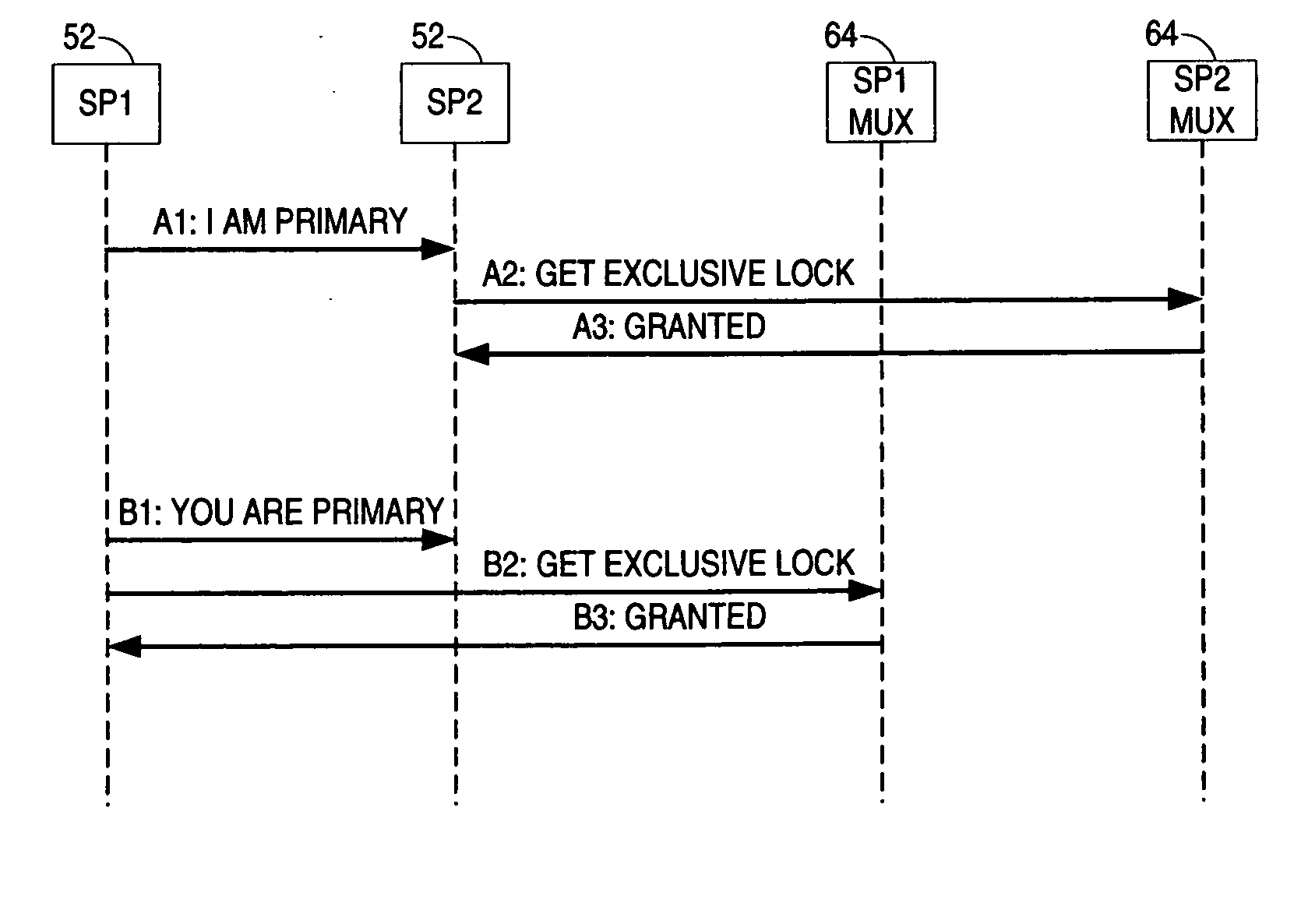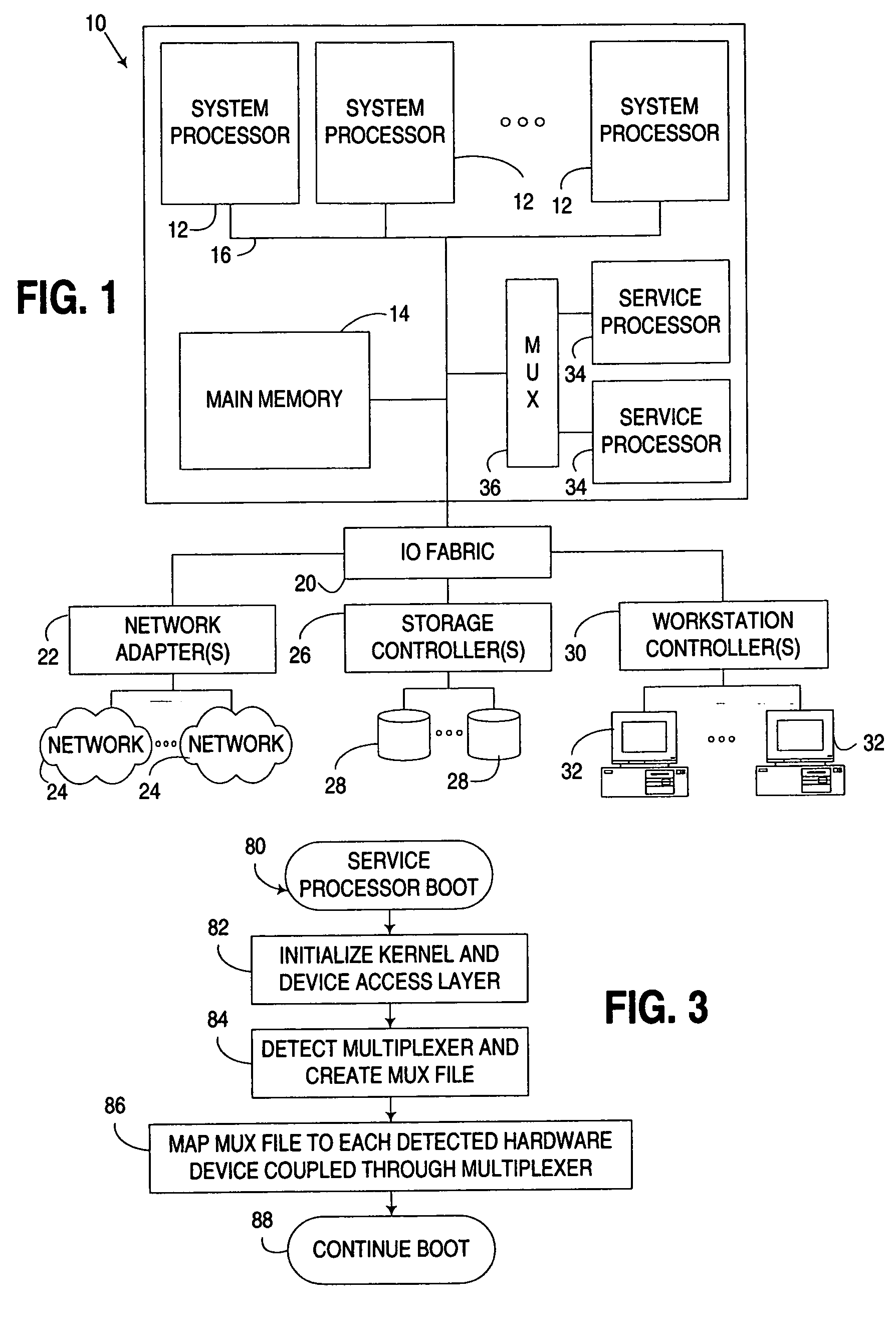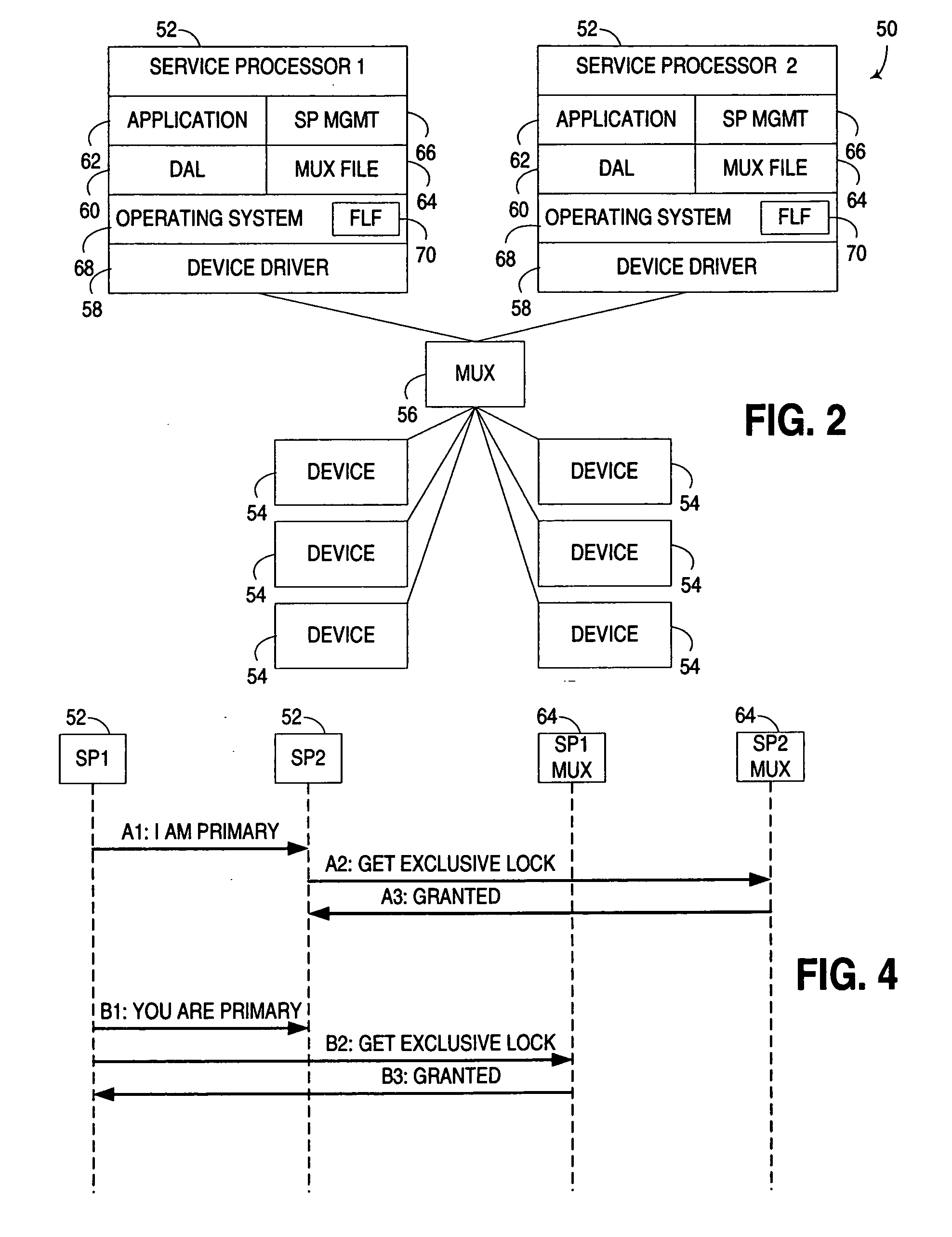File-based access control for shared hardware devices
- Summary
- Abstract
- Description
- Claims
- Application Information
AI Technical Summary
Benefits of technology
Problems solved by technology
Method used
Image
Examples
Embodiment Construction
[0021] The embodiments discussed hereinafter utilize file-base access control to control access to hardware devices shared by multiple processors in a computer or other programmable electronic device. In particular, embodiments consistent with the invention effectively virtualize a hardware device and / or the communication path through which the hardware device is coupled to the processors with a file, such that access to the hardware device may be controlled via a lock associated with the file.
[0022] As will become more apparent below, by using file locking as a mechanism, multiple applications running on a processor can specify shared or exclusive lock requests, and the mechanism is separated from any hardware specific device driver. Furthermore, the overhead associated with implementing file-based locking, both in terms of development, processing, and storage overhead, is typically relatively modest.
[0023] Consistent with the invention, each instance of a shared hardware device ...
PUM
 Login to View More
Login to View More Abstract
Description
Claims
Application Information
 Login to View More
Login to View More - R&D
- Intellectual Property
- Life Sciences
- Materials
- Tech Scout
- Unparalleled Data Quality
- Higher Quality Content
- 60% Fewer Hallucinations
Browse by: Latest US Patents, China's latest patents, Technical Efficacy Thesaurus, Application Domain, Technology Topic, Popular Technical Reports.
© 2025 PatSnap. All rights reserved.Legal|Privacy policy|Modern Slavery Act Transparency Statement|Sitemap|About US| Contact US: help@patsnap.com



